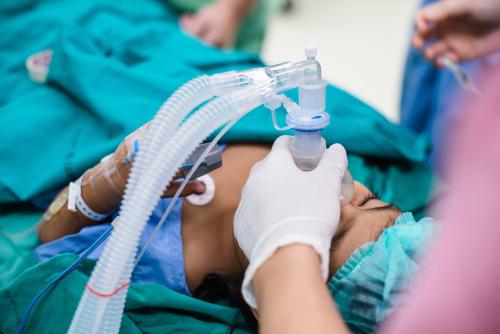New guidance outlines recommendations for infection control in anesthesiology
Newswise Dec 13, 2018
The Society for Healthcare Epidemiology of America has issued a new expert guidance on how hospitals and healthcare providers may reduce infections associated with anesthesiology procedures and equipment in the operating room.

The guidance, published in SHEA’s journal, Infection Control & Healthcare Epidemiology, recommends steps to improve infection prevention through increased hand hygiene, environmental disinfection, and continuous improvement plans.
“Even though the demands on anesthesia providers make infection prevention best practices more challenging, there are opportunities for improvement,” said Silvia Munoz-Price, MD, PhD, lead author of the guidance and Professor of Medicine at Froedtert & Medical College of Wisconsin. “We describe how the anesthesiology team and hospital leaders can optimize infection prevention in operating room anesthesia, and we give suggestions for the future, including the need for better equipment design.”
A growing body of research has shown that contamination in anesthesiology work areas is connected to healthcare-associated infections that put patients at risk. A survey of 49 US and international facilities showed infection control policies and practices are inconsistent. A writing panel—consisting of representatives from SHEA, the American Society of Anesthesiologists (ASA), the Anesthesia Patient Safety Foundation (APSF), and the American Association of Nurse Anesthetists (AANA)—developed the guidance to establish procedures and best practices specific to anesthesia in the operating room
The key recommendations include:
- Hand hygiene should be performed, at a minimum, before aseptic tasks, after removing gloves, when hands are soiled, before touching the anesthesia cart, and upon room entry and exit. The authors also suggest strategic placement of alcohol-based hand sanitizer dispensers.
- During airway management, the authors suggest the use of double gloves so one layer can be removed when contamination is likely and the procedure moves too quickly to perform hand hygiene. The report also recommends high-level disinfection of reusable laryngoscope handles or adoption of single-use laryngoscopes.
- For environmental disinfection, the guidance recommends disinfecting high-touch surfaces on the anesthesia machines, as well as keyboards, monitors and other items in work areas in between surgeries, while also exploring the use of disposable covers and re-engineering of the work surfaces to facilitate quick decontamination in what is often a short window of time.
- IV drug injection recommendations include using syringes and vials for only one patient, and that injection ports and vial stoppers should only be accessed after disinfection.
The authors suggest that implementation of the recommendations requires multi-level collaboration within the hospital, regular monitoring, and evaluation of infection prevention practices with regular feedback for providers as well as clarity in expectations about behaviors. According to the guidance, leadership should define goals, remove barriers to infection prevention, and empower practitioners to meet standards.
ASA President Linda Mason, MD, FASA, said the collaboration between anesthesiology and infection prevention is critical to patient safety: “These guidelines address the evidence base for infection prevention while taking into account the realities of the operating room and the complexities involved in providing anesthesia services.” ASA supports local hospital-level discussions and decision-making regarding the use of laryngoscopes, including disinfection procedures per the manufacturer’s recommendations or use of disposable tools, and emphasizes that practices and local administrators should follow any and all updates to the US Pharmacopeia Chapter <797>, expected in the coming months.
The guidance was endorsed by the SHEA Board of Trustees, the American Academy of Anesthesiologist Assistants (AAAA), AANA, the Association for periOperative Registered Nurses (AORN), and APSF, with a letter of support from ASA.
-
Exclusive Write-ups & Webinars by KOLs
-
Daily Quiz by specialty
-
Paid Market Research Surveys
-
Case discussions, News & Journals' summaries